Vietnam is a country that often leaves travelers with strong impressions. It’s a place of vibrant energy, historical depth, and stunning natural beauty. My own journey through Vietnam, traveling from North to South, was a truly unforgettable experience, a mix of exhilarating discovery and moments of sensory overload. While the bustling cities and chaotic traffic can be overwhelming at times, there’s an undeniable charm and richness that keeps you captivated.
Beyond the initial shock of the crowds and constant motion, Vietnam reveals itself layer by layer. The food scene alone is enough reason to visit – it’s arguably one of the best cuisines in the world, bursting with fresh flavors and regional specialties. Add to this the dramatic landscapes, from limestone karsts to lush rice terraces, and you begin to understand the country’s appeal. Once you learn to navigate the rhythm of Vietnamese life, the initial chaos transforms into a lively, fascinating symphony. If you’re planning a trip, here are some of the incredible things to see and do in Vietnam.
Discover the Vibrant North: Hanoi and Surrounds
Hanoi, the capital, is the beating heart of northern Vietnam and a must-visit. It’s a city that fully immerses you in Vietnamese culture, with its lively streets, constant traffic, and bustling markets. Walking on the sidewalks often means dodging parked scooters and street vendors, pushing you into the energetic flow of the street.
The Old Quarter is the historical core, a labyrinth of narrow alleys where every turn reveals hidden cafes, street food stalls, and shops. It’s a fantastic place to get lost, soak up the atmosphere, and arrange tours to nearby attractions like Ha Long Bay or Sapa. Most visitors choose to stay right here, putting them at the center of the action.
Among the key historical and cultural sites, don’t miss the Temple of Literature, a beautiful example of traditional architecture and Vietnam’s first national university. It dates back to 1070 and features stelae honoring accomplished scholars. Hoan Kiem Lake offers a peaceful escape from the city noise, and its iconic red bridge leading to Ngoc Son Temple is particularly beautiful when illuminated at night.
The Ho Chi Minh Mausoleum Complex is another significant area. Near the Mausoleum itself, you can visit Ho Chi Minh’s Stilt House and the unique One Pillar Pagoda. This area is less chaotic as it’s largely closed to traffic, making it pleasant for a leisurely stroll, especially on a sunny day.
Experience Unique Culture: Water Puppets and Sacred Pagodas
One of the quintessential things to see and do in Vietnam is attending a Water Puppet show. This traditional art form involves puppets controlled from below the water’s surface, depicting stories of Vietnamese folklore and daily life. It’s a visually engaging experience, popular with tourists, but offers a glimpse into the country’s cultural narratives in a fun, accessible format. The shows are typically just the right length to enjoy without getting restless.
What to Eat in Fort Worth – A Culinary Deep Dive
11 Must-Visit places to go in nevada for Your 2025 Trip
12 Unforgettable Fun Things to Do in Vegas for Couples
Exploring sacred sites offers deeper cultural insights. The Perfume Pagoda, located southwest of Hanoi, is a fascinating complex of Buddhist temples built into the Hương Tích limestone mountains. While it attracts many local tourists, it provides an interesting look at Vietnamese religious practices. The most important temple, Chua Trong, is nestled inside a stunning cave.
Reaching Chua Trong involves either a scenic hike or a ride on the cable car, offering breathtaking views of the surrounding landscape. Be mindful that humidity can make the footpath slippery. The journey to the pagoda complex itself is part of the experience, starting with a boat ride down the tranquil Yen River, rowed traditionally by women. The arrival area can be bustling with market stalls, adding to the lively atmosphere.
Witness Natural Wonders: Ha Long and Bai Tu Long Bay
Ha Long Bay is arguably Vietnam’s most iconic natural attraction and a UNESCO World Heritage Site, famous for its thousands of limestone karsts and islets rising dramatically from the emerald waters of the Gulf of Tonkin. A cruise through the bay is a highlight for most travelers.
Activities on a Ha Long Bay trip often include kayaking around the islets, exploring caves, hiking on islands, and sometimes joining cooking or Tai Chi classes on the boat deck. Meals served onboard are typically generous and delicious. Cabins are often comfortable with large windows offering continuous views of the spectacular scenery.
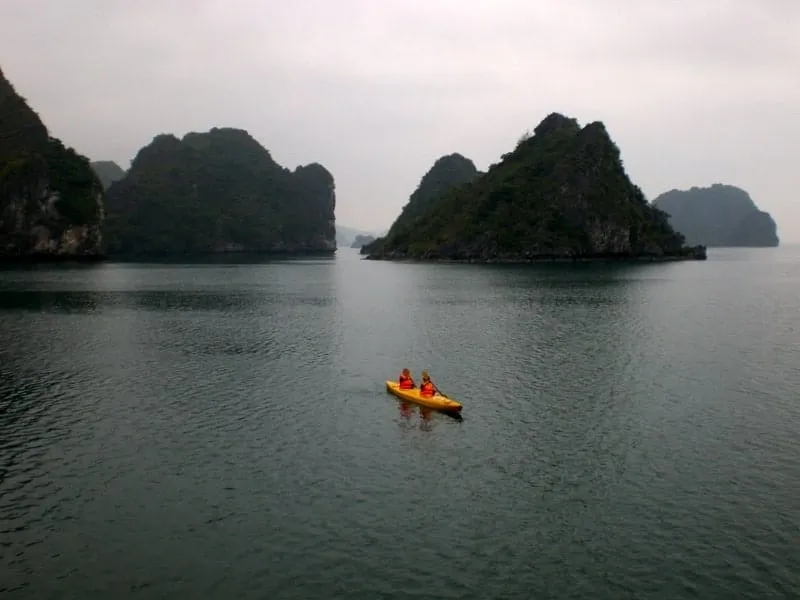 Kayaking among limestone karsts in Ha Long Bay
Kayaking among limestone karsts in Ha Long Bay
While stunning, Ha Long Bay can be crowded, and unfortunately, the heavy tourism has led to pollution issues. If you’re looking for a slightly quieter experience, consider visiting neighboring Bai Tu Long Bay, which offers similar landscapes but with fewer tour boats and tourists. Some tours combine both bays.
Choosing a reputable boat operator is important, as quality varies. Booking in advance online allows you to read reviews and select a cruise that aligns with your preferences and budget. While budget options exist, it’s often worth paying a little more for better safety standards and a more ethical operation. Cruises typically depart from near Hanoi, involving a drive to the coast before boarding.
Trek Through Northern Highlands: Sapa and Bac Ha
Heading northwest from Hanoi brings you to the mountainous region of Sapa and Bac Ha, home to various ethnic minority groups like the Hmong. This area is renowned for its breathtaking terraced rice fields, mist-shrouded mountains, and vibrant local culture. Trekking here offers an opportunity to connect with nature and local communities.
Many trails wind through the valleys, passing through traditional villages. Guided hikes are popular, allowing you to explore off-the-beaten-path routes and meet local families. My experience hiking near Bac Ha and from Sapa to the Black Hmong village of Ta Van involved stunning scenery – vast rice paddies, grazing buffalo, and interactions with friendly locals, some of whom speak surprisingly good English.
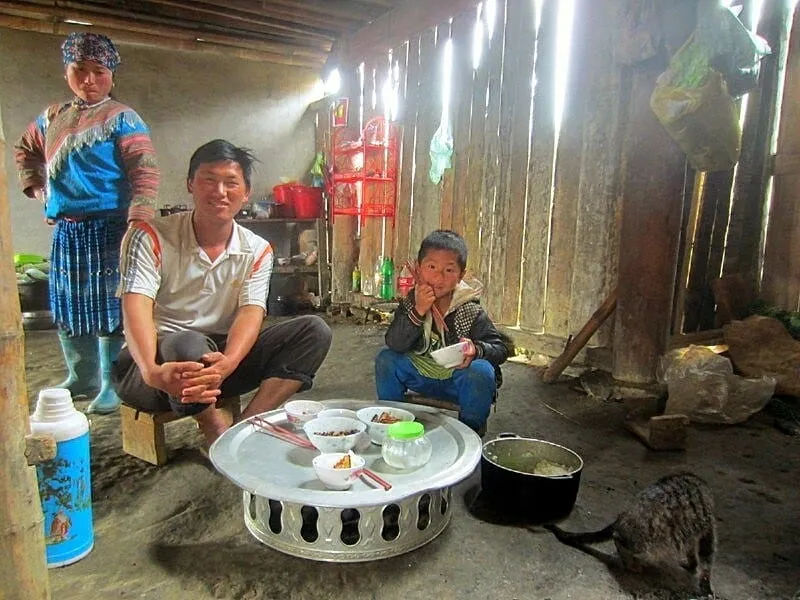 People of the Flower Hmong minority in Sapa Valley
People of the Flower Hmong minority in Sapa Valley
The landscapes around Sapa, with their dramatic rice terraces, are simply incredible and offer fantastic photo opportunities. The welcoming smiles of the people add to the charm of the region.
A highlight of visiting this area is the Sunday market in Bac Ha. It’s a truly vibrant spectacle where people from surrounding villages, dressed in their distinct traditional clothing, gather to trade goods. You’ll find everything from livestock and produce to textiles and handicrafts. It’s a lively place to experience local commerce and culture, and a great spot for souvenir shopping (respectful haggling is part of the fun).
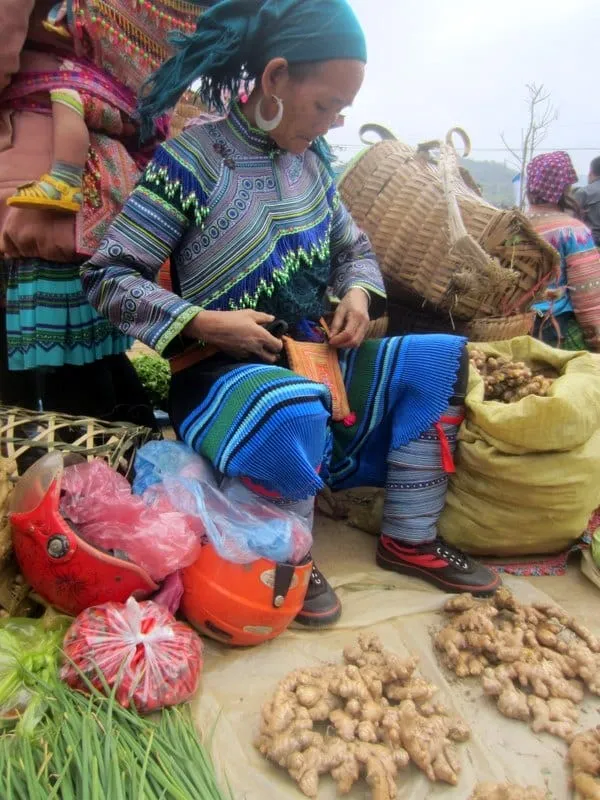 Colorful Bac Ha Market with locals in traditional dress
Colorful Bac Ha Market with locals in traditional dress
Charming Central Vietnam: Hoi An’s Ancient Appeal
Hoi An, a UNESCO World Heritage Site in central Vietnam, feels like a different world compared to the bustling northern cities. Its beautifully preserved Ancient Town, closed to traffic, with its cobbled streets, historic buildings, and lantern-lit nights, is incredibly charming and relaxed. If I had to choose a place to linger in Vietnam, Hoi An would be it.
Exploring the Ancient Town is a delight. Key architectural gems include the iconic Japanese Covered Bridge, dating back to the late 16th century. A tourist ticket is available, offering entry to several historical houses, temples, and museums scattered throughout the town over a 10-day period – a great value for exploring the rich history.
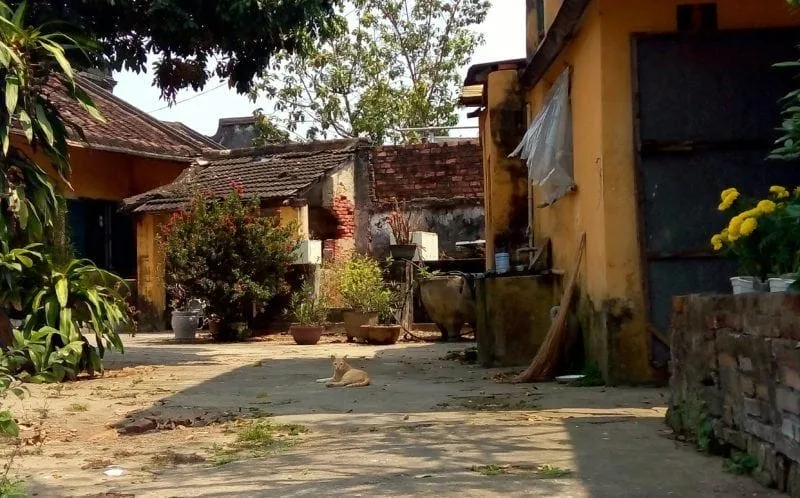 Ancient buildings and yellow walls in Hoi An
Ancient buildings and yellow walls in Hoi An
Hoi An is famous for its incredible density of tailors. Getting custom-made clothes is one of the highly recommended things to see and do in Vietnam, specifically here. While prices are very affordable compared to Western countries, remember that skilled tailoring takes time and effort, so haggle respectfully. Even top tailors offer significant savings.
Choosing a reputable tailor, like Be Be (known for quality), is key. Have a clear idea of what you want and the fabric you prefer. Allow enough time in the city for fittings to ensure the perfect result.
Beyond the history and tailoring, Hoi An has a lively atmosphere, especially in the evenings. The night market across the river comes alive with street food vendors and budget eateries, offering a wide array of local delicacies. While bars offer cheap drinks, quality can vary, so choose wisely!
Just outside Hoi An, you can find beautiful rice fields. A short bike ride takes you to Cam Kim island, where life moves at a slower pace. Cycling through the green fields, past simple homes and smiling locals, is a peaceful escape from the town’s tourist crowds and offers a glimpse into rural life.
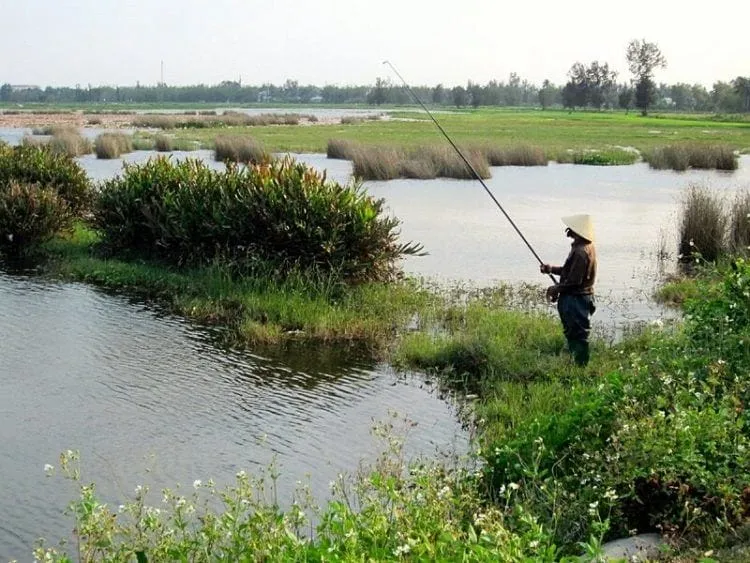 Tranquil rice fields on Cam Kim Island near Hoi An
Tranquil rice fields on Cam Kim Island near Hoi An
And if you’re craving beach time, the coast near Hoi An has several options. An Bang beach is popular and well-serviced with bars and restaurants like Soul Kitchen. For a quieter spot, head further north towards Da Nang, where you can find secluded stretches of sand.
Vietnam is also incredibly budget-friendly for wellness. Getting a massage is a fantastic way to relax and rejuvenate. Hoi An has numerous spas offering great treatments at low prices. Ask your hotel for recommendations to find a reliable place.
Dynamic South: Ho Chi Minh City and Mekong Delta
Ho Chi Minh City, formerly Saigon, is the bustling economic hub of the South. It’s a massive, energetic metropolis that serves as a gateway to the Mekong Delta and Cambodia. Despite its size, it has distinct areas worth exploring.
For panoramic city views, head up to the Saigon Skydeck at the Bitexco Financial Tower. On a clear day, the perspective is spectacular. The Dong Khoi area is home to significant colonial-era architecture, including Notre Dame Cathedral, the Central Post Office, and the National Theater.
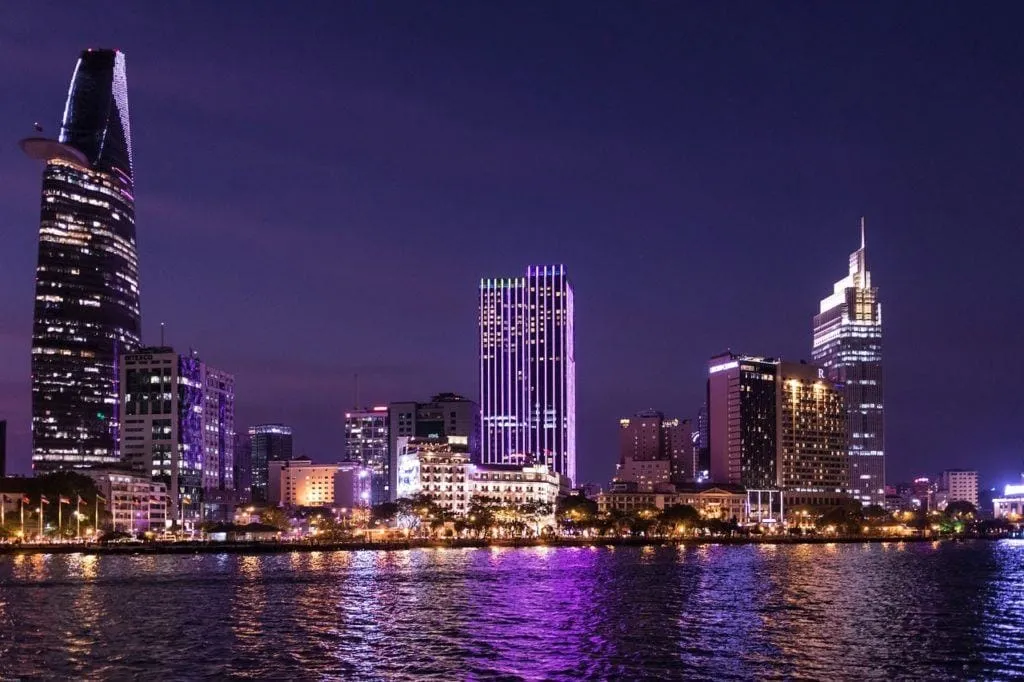 Ho Chi Minh City skyline with the Bitexco Financial Tower
Ho Chi Minh City skyline with the Bitexco Financial Tower
Cholon, the city’s Chinatown, is the place to explore vibrant markets and numerous pagodas. A deeply moving experience is visiting the War Remnants Museum. It houses a powerful collection of images and artifacts from what is known in Vietnam as the American War. It’s a disturbing but essential visit to understand a crucial part of the country’s recent history.
Historical Insights: Cu Chi Tunnels
About 40 km from Ho Chi Minh City are the Cu Chi Tunnels. This vast underground network was used by Viet Cong soldiers as hiding places, communication routes, and living quarters during the war. Exploring a section of the tunnels gives a vivid sense of the harsh conditions faced. Visiting with a guide is highly recommended to understand the history and significance of the site.
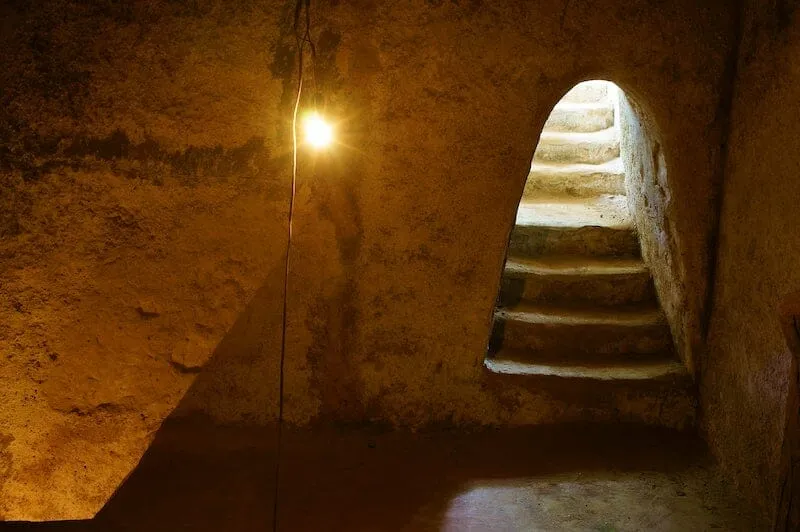 Entrance to the Cu Chi Tunnels
Entrance to the Cu Chi Tunnels
The Watery World of the Mekong Delta
Known as Vietnam’s “rice bowl,” the Mekong Delta is a fascinating region defined by its intricate network of rivers, canals, and streams. Life here revolves around the water, with houses, markets, and businesses floating on or clustered along the waterways. Cai Rang floating market near Can Tho is one of the largest and most famous in the region.
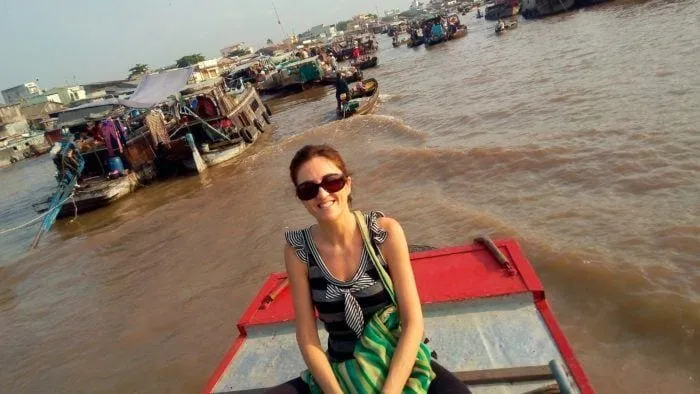 Colorful boats at a floating market in the Mekong Delta
Colorful boats at a floating market in the Mekong Delta
While main centers like Can Tho and Chau Doc can be busy, the smaller back channels are incredibly tranquil, offering a peaceful contrast. Tours of the Delta often include boat rides through the waterways, visits to local family-run businesses like bakeries or candy factories, cycling through rural villages, and sometimes meeting local communities, like the Muslim minority in the region. It’s a world apart from the busy cities and reveals the agricultural heart of Vietnam.
Dive into Vietnamese Cuisine
Without a doubt, one of the absolute essential things to see and do in Vietnam is eat! Vietnamese food is renowned globally for its freshness, balance of flavors, and variety. From iconic pho (beef or chicken noodle soup) served with heaps of fresh herbs and sprouts, to savory noodle dishes and unique desserts like grilled banana with sticky rice, every meal is an adventure. Vegetarian options are widely available, though be aware that fish sauce is a common ingredient.
Street food is a major part of the experience. Sitting on tiny plastic stools at small tables and enjoying a full, delicious meal with a local beer for just a couple of dollars is a quintessential Vietnamese moment. The key to finding a good spot is observing where locals eat and where food is being continuously cooked – signs of freshness and popularity.
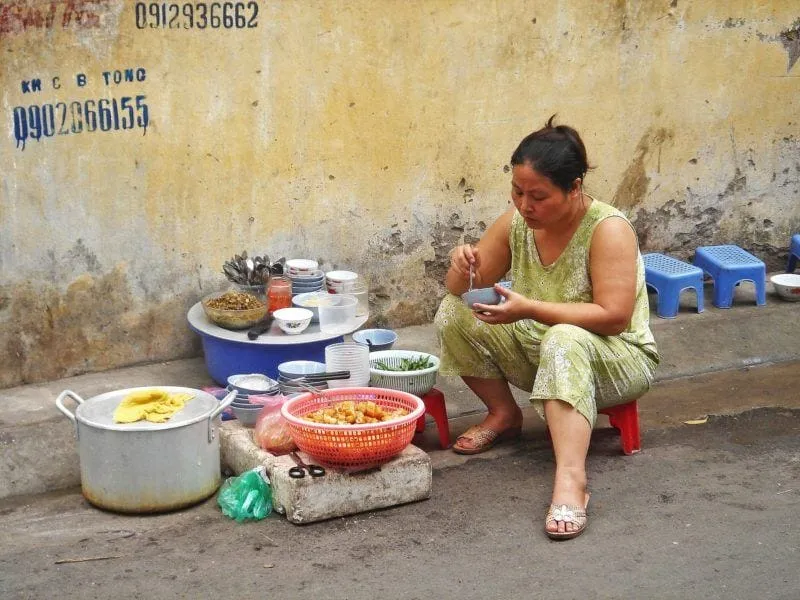 Woman preparing street food in Hanoi
Woman preparing street food in Hanoi
Taking a cooking class is a wonderful way to learn about the ingredients and techniques behind Vietnamese cuisine and to try making dishes yourself. Hoi An is a particularly popular place for cooking classes, often including market visits to learn about local produce.
And when you need to quench your thirst, Vietnamese beer is crisp, cold, and incredibly cheap, often less than a dollar a bottle. Many local spots sell bia hoi (fresh beer) by the glass for pennies.
Don’t forget to try Vietnamese coffee. It’s strong, rich, and brewed slowly using a drip filter. Served black or with sweet condensed milk (ca phe sua da, especially refreshing iced), it’s a powerful caffeine kick and a distinct cultural experience.
Shopping and Souvenirs
Shopping is another popular activity. While you’ll find counterfeit goods readily available, be mindful that genuine branded items are priced similarly to elsewhere in the world. Markets and souvenir shops are plentiful, but be prepared to haggle. Walking away is often the most effective negotiation tactic – if they don’t call you back, the price is likely firm. Look for unique handicrafts, textiles, or local produce to take home.
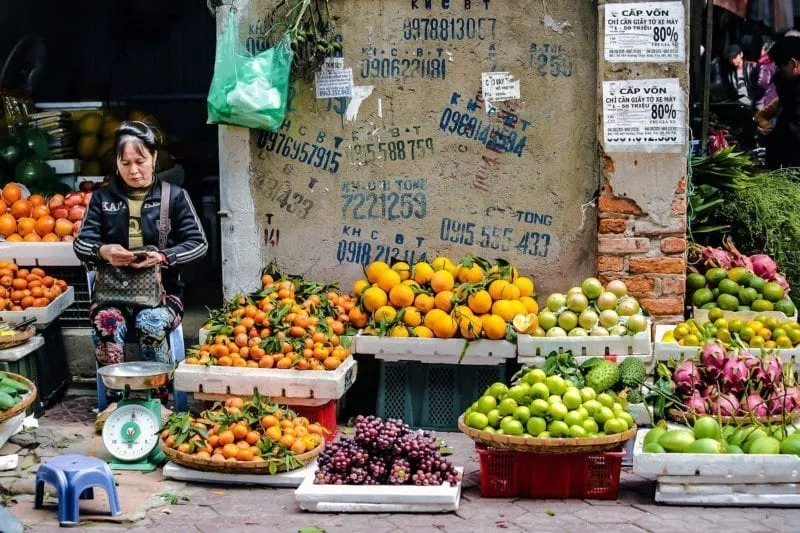 Vendor at a market stall selling goods
Vendor at a market stall selling goods
Vietnam offers a wealth of experiences for every traveler. While it can be intense, its beauty, history, culture, and incredible food make it an endlessly rewarding destination.
Frequently Asked Questions About Vietnam
What is the best time of year to visit Vietnam?
Vietnam’s climate varies significantly from North to South. Generally, spring (February to April) and autumn (August to October) offer the most pleasant weather across the country, with milder temperatures and less rain.
How do I get around Vietnam?
Traveling between cities is often done by train, bus, or plane (for longer distances). Within cities, taxis, ride-hailing apps (like Grab), cyclos, and renting a scooter are common. Walking is great in areas like Hoi An’s Ancient Town or Hanoi’s Old Quarter, but be cautious of traffic.
Is Vietnam safe for tourists?
Vietnam is generally safe for tourists, but like any popular destination, petty crime like pickpocketing can occur, especially in crowded areas. Traffic can be chaotic and requires attention. Be mindful of scams, particularly with taxis or street vendors.
What currency is used in Vietnam?
The official currency is the Vietnamese Dong (VND). US dollars are also widely accepted in tourist areas, but it’s usually better to pay in VND. ATMs are readily available in cities.
Do I need a visa for Vietnam?
Visa requirements depend on your nationality. Many nationalities can enter visa-free for a limited time, while others need to apply for a visa in advance or get a visa on arrival (VOA) with an approval letter. Check the latest requirements before traveling.
